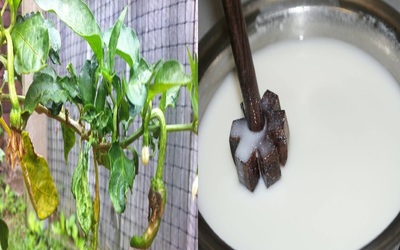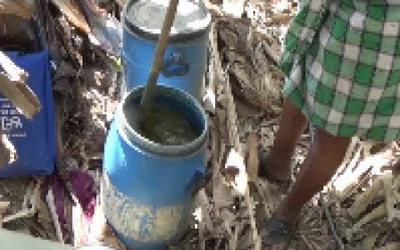
लाभकारी कीट
लाभकारी कीट-सभी कीट खराब नहीं होते हैं। कीटों को ” पेस्ट्स (pests)” के रूप में भी लेबल किया जाता है। पेस्ट्स (pests) लोगों, पौधों, जानवरों और इमारतों की देखभाल करने वाले लोगों को नुकसान पहुंचाने लगते हैं। लगभग एक मिलियन ज्ञात कीट प्रजातियों में से केवल एक से तीन प्रतिशत ही “पेस्ट्स (pests)” माने जाते हैं। बाकी कीटों के बारे में क्या कहना है? कुछ कीट वास्तव में पेस्ट्स (pests) को रोककर हमारी मदद करते हैं।
अगर हम कीटों अपना काम करने दें, तो कई तरह के कीड़े वास्तव में हमारी मदद कर सकते हैं:
1. कीटों पर शिकार करके
मकड़ियाँ कीटों की शिकारी होती हैं। जिसमें कुछ प्रकार के भृंग, मक्खियाँ, असली कीड़े, और फीताकृमि सम्म्लित हैं।
2. कीट पेस्ट्स (pests) का परजीवीकरण करके
परजीवी कीड़े, कुछ छोटे ततैया की तरह, अपने अंडे कीड़े या उनके अंडों के अंदर रखते हैं। जो पेस्ट्स (pests) की आबादी को कम करने में मदद कर सकता है।
3. पौधों को परागण करके
देशी मधुमक्खियाँ, मधुमक्खियाँ, तितलियों और पतंगे जैसे कीड़े इस सेवा को प्रदान कर सकते हैं, जो पौधों को फल देने में मदद करते हैं।
4. गैर– कीट लाभकारी जानवरों के बारे में मत भूलना!
पक्षी और चमगादड़ जानवरों के उदाहरण हैं जो कीटों का भोजन करते हैं।
कुछ लाभकारी कीट:-
1 .एफिड मिज
एफिड मिज के लिए अपने बगीचे में पराग के पौधे लगाएं। छोटे, लंबे पैर वाली दोनों वयस्क मक्खियाँ और उसके लार्वा, एफिड्स की 60 से भी अधिक प्रजातियों के शिकार को अपने विषाक्त लार के साथ पंगु बना देता है।


2. ब्रासोनिड वास्प्स
इस प्रजाति के वयस्क मादा अपने अंडों को मेजबान कीटों में इंजेक्ट करती है, जिसमें कैटरपिलर, मोथ, बीटल लार्वा और एफिड शामिल हैं। लार्वा मेजबान के अंदर भोजन करता है और जब लार्वा पूरा विकास कर लेता है तो मेजबान मर जाता है। इन कीटों को आकर्षित करने के लिए अपने बगीचे में छोटे पौधे जैसे कि डिल, ख़ुरासानी अजवायन, जंगली गाजर, और गंद्रैण के साथ मधु वाले पौधे भी उगाएं।
3. डामसेल कीड़े
डामसेल कीड़े- एफिड्स, छोटे कैटरपिलर, लीफहॉपर्स, थ्रिप्स और अन्य अजीब कीटों का भोजन करते हैं। एक स्वीप जाल का उपयोग करके अल्फाल्फा क्षेत्रों से डामसेल कीड़े को इकट्ठा करें, और फिर उन्हें अपने सब्जी के बगीचे में और उसके आसपास छोड़ दें।


4. ग्राउंड बीटल
रात का ग्राउंड बीटल- स्लग, घोंघे, कटवर्म, गोभी मैगॉट और अन्य कीटों का एक भयानक शिकारी है, जो आपके बगीचे की मिट्टी में रहता है। अकेले एक ग्राउंड बीटल लार्वा 50 से अधिक कैटरपिलर को खा सकता है। इन कीटों को बागों में स्थिर रखने के लिए बगीचे के पौधों के बीच में बारहमासी पौधे, या बागों में सतह आवरण के रूप में सफेद तिपतिया घास को लगाएं।
5. लेसविंगस
दोनों वयस्क लेसविंगस और उनके लार्वा- एफिड्स, कैटरपिलर, मीलीबग्स, स्केल्स, थ्रिप्स, और व्हाइटफ़ाइल्स खाते हैं। एंजेलिका, कोरोप्सिस, कॉसमॉस, स्वीट एलिस्सुम और लेसविंगस जैसे पौधे अपने बगीचे में लगाएं।

6. लेडी बीटल्स
वयस्क लेडी बीटल्स- एफिड्स, माइट्स और मीलीबग्स खाती को हैं – और उनके भूखे लार्वा बगीचे के कीटों को और भी अधिक नुकसान पहुंचाते हैं। एंजेलिका, कोरोप्सिस, डिल, सौंफ़ और गंद्रैण आदि पौधों को अपने बगीचे में कीटों को आकर्षित करने के लिए लगाएं।

7. मिनट समुद्री डाकू कीड़े
त्वरित गति से चलने वाले, काले और सफेद मिनट वाले समुद्री डाकू लगभग किसी भी कीट पर हमला करते हैं। गोल्डनरॉड, डेज़ी, अल्फाल्फा और गंद्रैण आदि पौधें इन सहायक कीट को आकर्षित करेंगे।


8. सैनिक बीटल्स
सैनिक बीटल्स- एफिड्स और कैटरपिलर का भोजन करता है, इसके साथ ही अन्य कीड़े – जिनमें हानिरहित और लाभकारी प्रजातियां भी शामिल हैं। कटनीप, गोल्डनरॉड और हाइड्रेंजिया जैसे पौधे लगाकर इस उड़ने वाले कीट को अपने बगीचे के लिए आकर्षित करें।
9. स्पीनेड सोल्जर बग
स्पीनेड सोल्जर बग को “कंधे” के लिए इशारा किया गया है। इसी वजह से पेसकिएर बदबू वाले कीड़े से अलग होता है। इसका शिकारी बिना बालों वाले कैटरपिलर और बीटल लार्वा को आश्रय प्रदान करने के लिए पौधों का बारहमासी स्थायी बिस्तर लगाए।


10. टैचीनीड मक्खियाँ
टैचीनीड मक्खियाँ के लार्वा बिल में कई कैटरपिलरों को अपना रास्ता देता है, और इन बगीचे के कीटों को अंदर से नष्ट कर देता है। वयस्क मक्खियों को आकर्षित करने के लिए डिल, अजमोद, मीठे तिपतिया घास, और अन्य जड़ी बूटियों के पौधे लगाएं।




